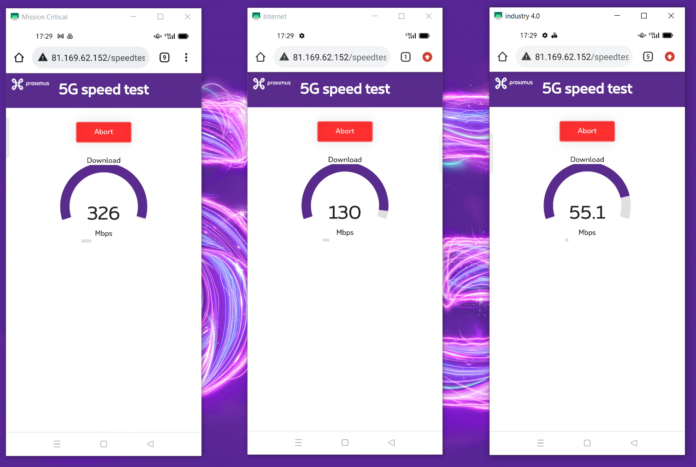Services run quicker with new Belgian slicing methods
Nokia and Belgian mobile operator Proximus claim they’ve coaxed greater performance out of 5G through their unique software definition of the network slicing process. Their creative new options for using radio software-defined networking and radio resource allocation technologies were displayed in live trial at Proximus’ 5G Innovation Lab in Brussels. Using real commercial applications they showed how a consistent customer experience can be sustained under the most congested networking conditions.
Demo
The new 5G RAN slicing faculty benefits a wide range of use cases, in addition to the obvious benefactors like Industry 4.0, the Internet of thing and enterprise applications. Public safety, drone inspection, virtual and augmented reality and cloud gaming are all one network slice closer to plausibility, according to closer to Nokia’s president of mobile networks Tommi Uitto. The Proximus/Nokia built services are now available now for trials and will be commercially available in Q3 for 5G standalone.
RAN slice
The new advanced RAN slicing functions ran in Nokia’s Airscale base station and were tested on a continual network run on the Proximus 5G innovation system using 50Mhz of spectrum in the 3600MHz band. Three devices were configured on three end-to-end slices and given 60%, 30% and 10%, respectively, of the available bandwidth resources. Each device reached the maximum bandwidth when connected individually and reached the assigned capacity when connected simultaneously.
SDN
The successful trial assigned specific radio resources per slice which were complemented with further radio capacity to cut latency for slices with time-sensitive applications. It also highlighted how an operator can control and dynamically adapt slice parameters in general and in particular set the radio resources per slice, says Nokia. Radio resource allocation technologies can be used in a radio network shared between multiple operators.
See demo
Nokia’s slice-aware radio resource allocation can be applied for 5G SA slices and 5G NSA traffic, according to Proximus CTO Geert Standaert. “Our advanced 5G network supports our customers’ business by creating new kinds of services and making the network more efficient,” said Standaert, who promised to complement the powers already granted by LTE by providing seamless continuity between 4G and 5G networks. “This trial with Proximus [is] another key milestone [in the journey] to deliver new functions that help customers create compelling new services,” said Nokia’s President of Mobile Networks Tommi Uitto.



